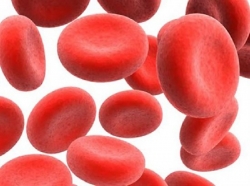How to treat iron deficiency anemia?

In an October issue of Blood, Moretti et al. (read paper) provide data that challenge the entrenched oral treatment of iron deficiency anemia. The paper is the result of a collaboration between researchers of ETH in Zurich, Wageningen University and Radboudumc-Hepcidinanalysis.com in the Netherlands and accompanied by an editorial of Stanley Schrier (read article). It gained attention of Dutch news agencies (read article; in Dutch).
The paper shows how the newer understanding of hepcidin and iron metabolism in general can lead to very practical improvements in the management of iron deficiency anemia, a disorder that may affect as many as 1 billion people. Using elegant technology based on their skills with 3 isotopes of iron, so that the non-anemic iron deficient female subjects (n=54) could be their own controls, they measured total and fractional iron absorption in several scenarios testing varying doses of oral iron administered over a variety of schedules. Per prediction, they found that ingesting a substantial single dose of oral iron, when absorbed, led to an increase in plasma iron, which in turn led to an increase in hepcidin (as measured by the ELISA of hepcidinanalysis.com). The measured increase in hepcidin then impaired iron absorption from subsequent doses of oral iron. This hepcidin effect, suppressing iron absorption, could last as long as 48 hours. It may thus be that our orthodox treatment of iron deficiency anemia is all wrong. It results in an ∼12% to 15% absorption of iron and produces unpleasant side effects. Rather than administering 1 large iron pill 3 times per day, maybe we should treat iron deficiency anemia by giving a single substantial dose of elemental ferrous iron before breakfast on Monday, Wednesday, and Friday. Recall that we need to absorb only ∼180 mg of iron per week to meet and beat the best current program.
